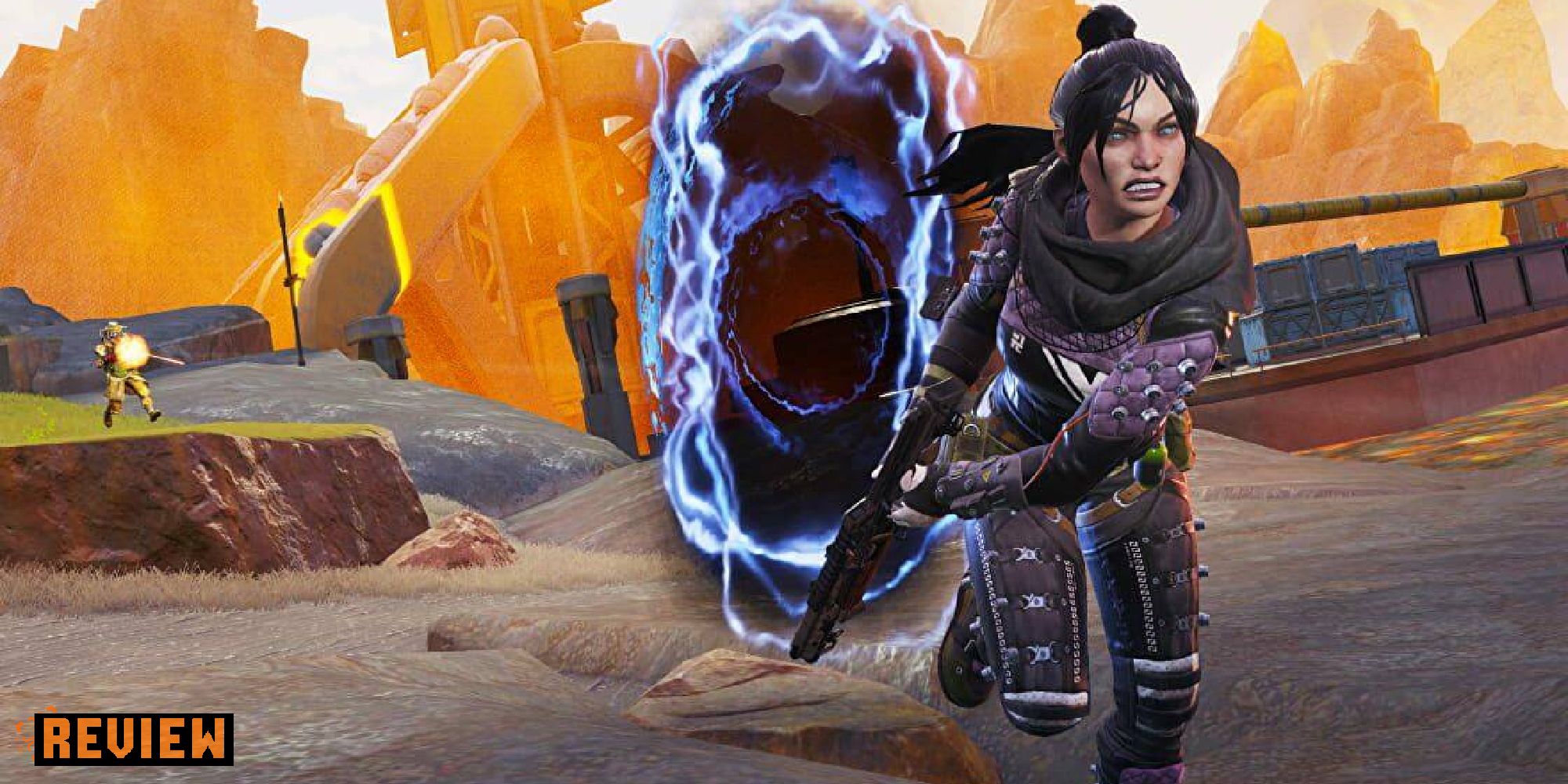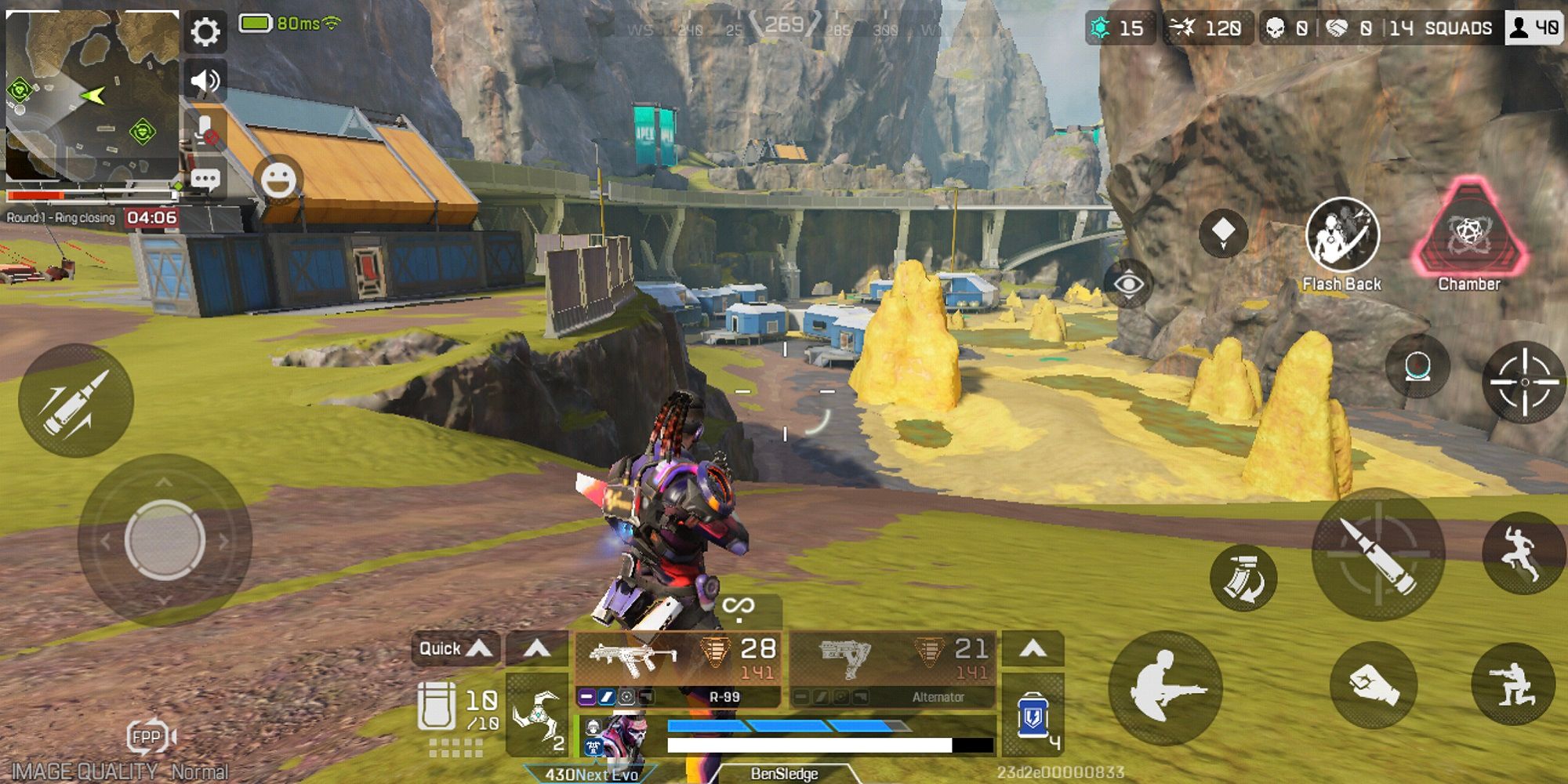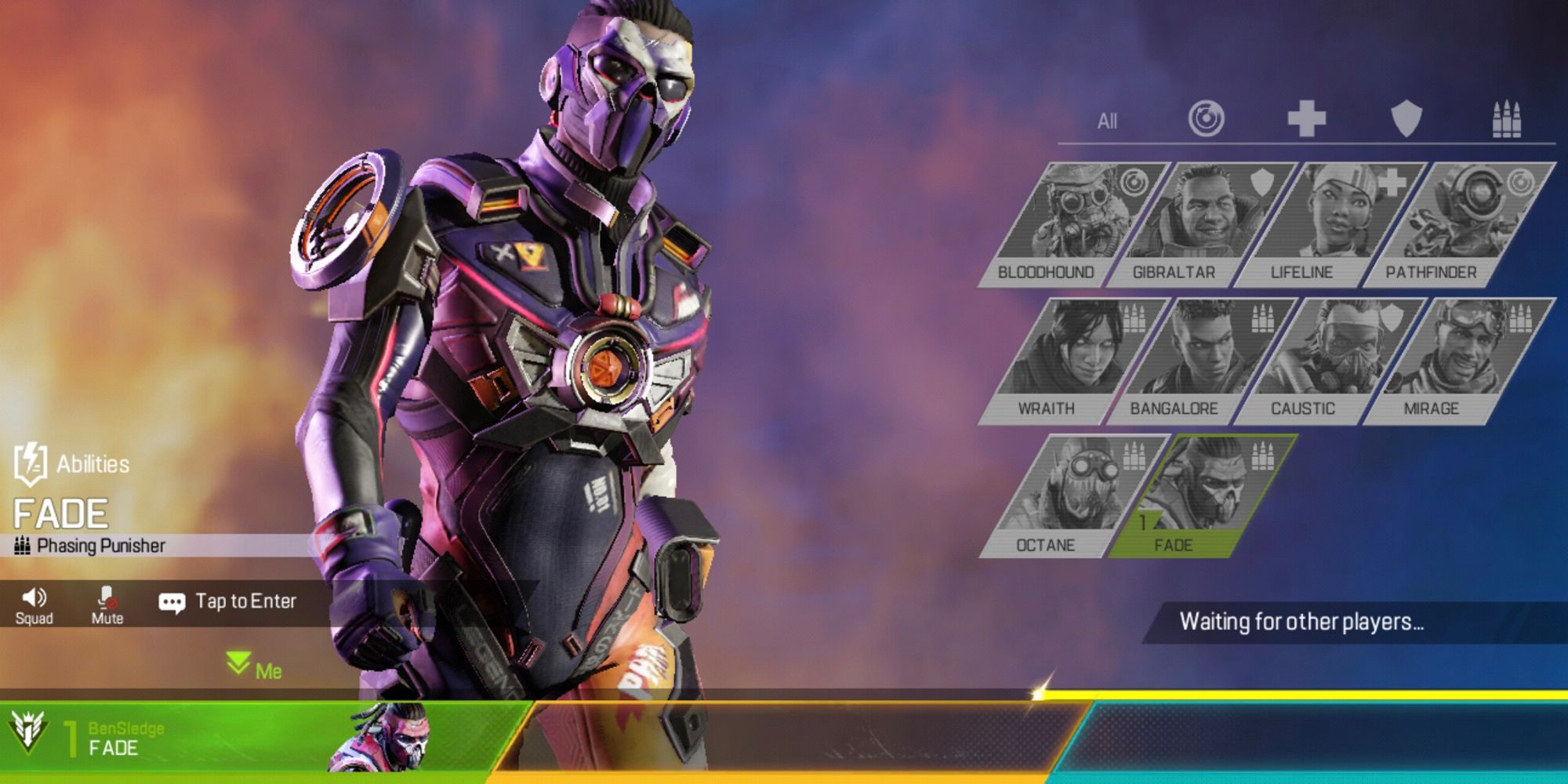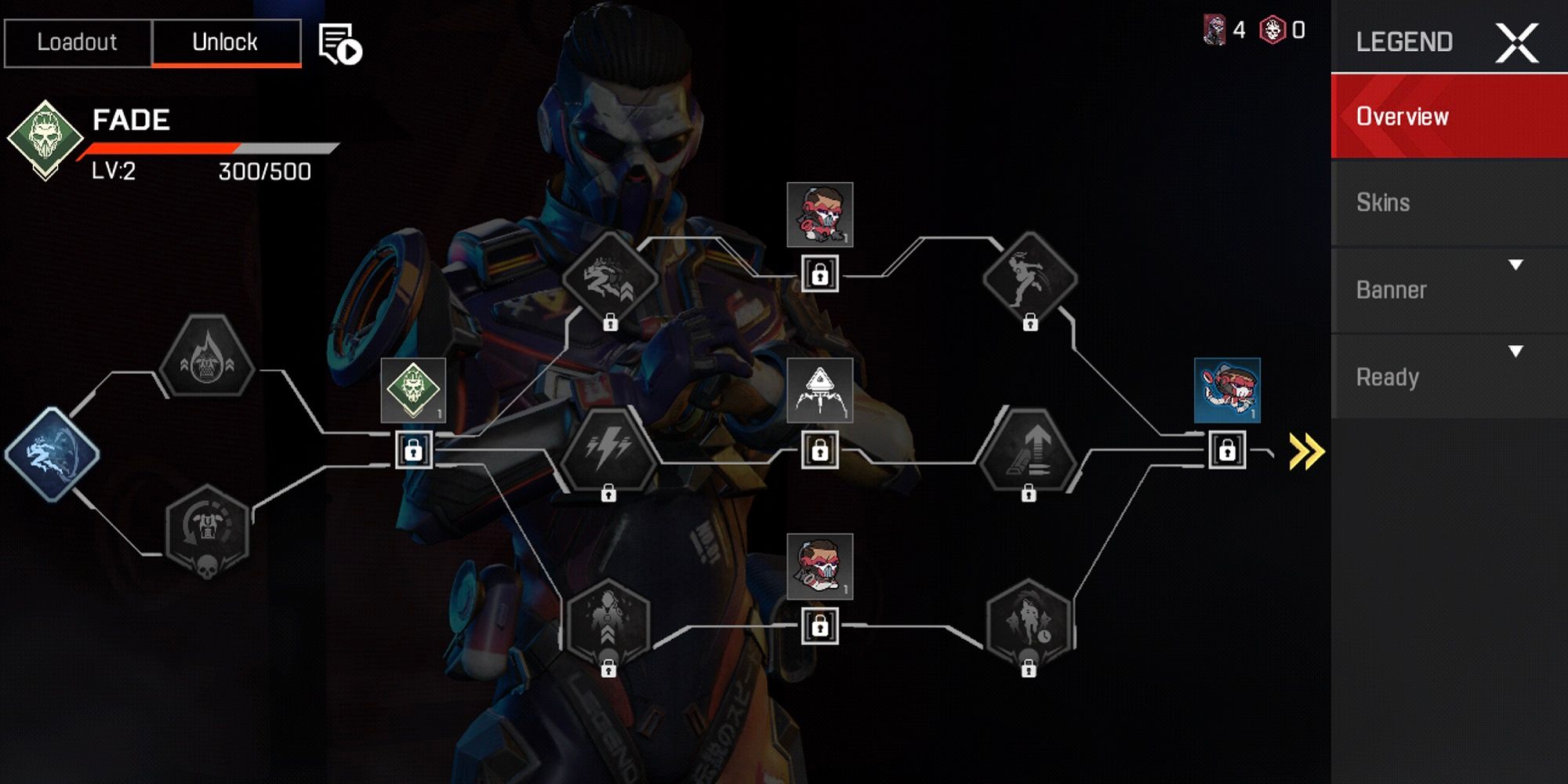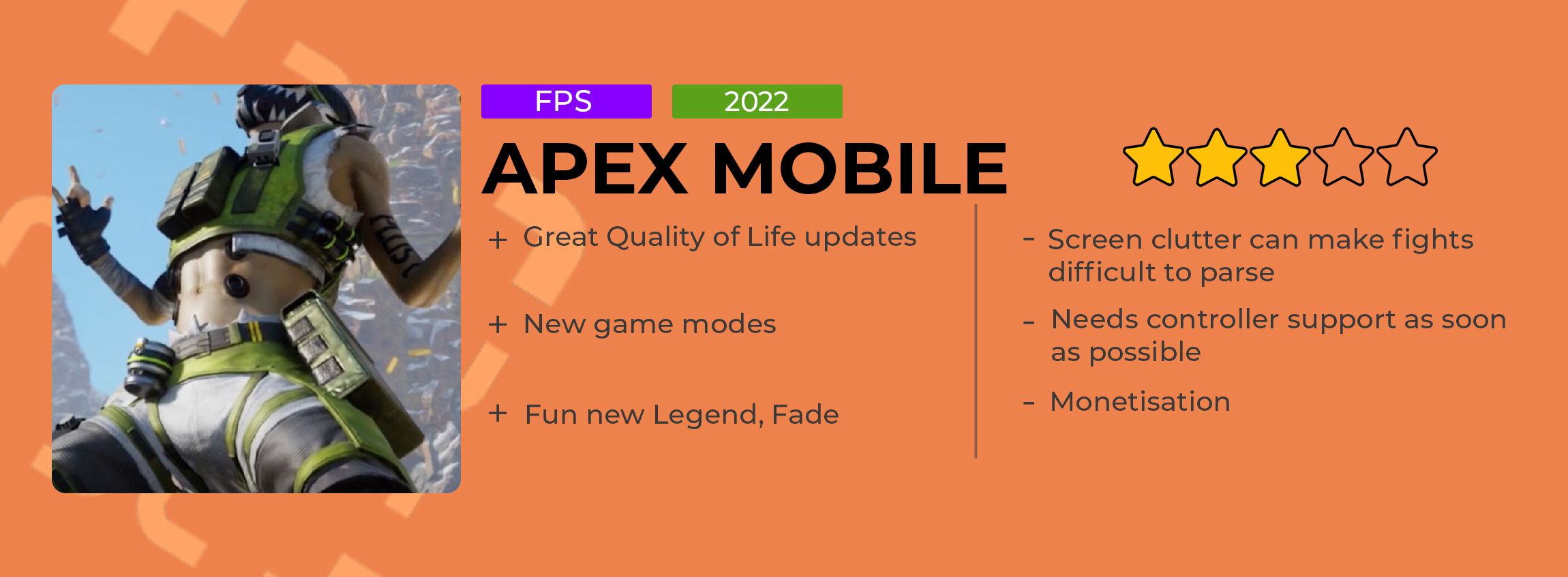Apex Legends is one of my favourite games, as you can probably tell from the amount I write about it. It’s the best battle royale I’ve played, and great seasonal updates – including new Legends, felled crustacean kaiju, and PvE minigames offering obscene amounts of loot – keep things fresh. I’m also a big fan of the esport, which adds another dimension, and the feel good stories that come out of the ALGS bring an extra level of excitement.
As I was tucking into the delicious changes that came as part of Season 13, I was also playing Season 1 of Apex Legends Mobile. Unlike the game’s Switch port, this is a wholly different game developed independently from the PC and console versions. Sure, we’re back on Kings Canyon and World’s Edge, and most of the Legends are the same, but Apex Mobile is a fundamentally different game.
Mirage introduces us to the Apex Games via a cutscene and then a tutorial. It’s all fairly straightforward, and having played the main game, the similarities meant I breezed through it. The tutorial is cleverly done, introducing you to the numerous onscreen buttons slowly, allowing you to get used to each one before moving on to the next. Interestingly, the same process applies for the main game.
When you log in at level one, you can only really play Battle Royale on World’s Edge. The more you play, the more modes you unlock. It’s a good way of introducing you to the various game modes without it ever feeling overwhelming. That’s even more important in the mobile version of the game, which has more modes than its older sibling, including multiple training minigames in the Firing Range, ranked and public lobbies on World’s Edge and Kings Canyon (slightly altered OG versions, that is), Arenas, and Team Deathmatch (which has two modes in itself). There's a huge variety on offer in Apex Legends Mobile, so much that it makes me worry slightly about queue times, but it at least creates a varied and interesting game. Bored of pubs? Try TDM for a bit. Hard-stuck in ranked? Get some practice against moving dummies in the Firing Range.
Some players will be pleased to hear that, at least in the version reviewers played, there is no map rotation for public lobbies. You can always pick between World’s Edge and Kings Canyon, and there’s the option to play in three LTMs too – but you’re not forced to. Armed and Dangerous, Quick Battle (small ring, fewer players), and Flashpoint are all on the table right now. You can play any mode in third-person or first-person perspective too, taking notes from PUBG and its own mobile port.
As for dropping into the matches themselves, things generally feel good. I’m playing on the Google Pixel 6 Pro, so I had no problems running the game, and matches were smooth even when a few teams were using abilities at the same time. I surprisingly found myself preferring to play in third person mode, as ADSing puts you in first-person anyway.
It’s hard adjusting to the smaller screen, and the most problematic issue for me was using the onscreen buttons. Not only did my fat thumbs get in the way of seeing enemies, the number of abilities and options cluttered the screen, and I often found myself misclicking. You can move every button in the settings, which is great, but you have to compromise between cluttering your view and making each button clickable, which is less than ideal. Controller support is coming, according to the devs, but wasn’t quite ready for launch. I think that will change things a lot for me, but seasoned mobile shooter players will likely already be used to the placement of on-screen buttons and have an easier time.
However, there are good points too. You can hold down the fire button on single-fire weapons to keep firing, meaning that you don’t mess up your aim every time you tap to loose another round. Looting is simple and effective, with your Legend automatically picking up ammo and attachments appropriate for your weapons while giving you the ability to click to add any extras to your inventory. Both using healing items and accessing your inventory use menus that are easy to navigate, and playing is generally simple and user friendly.
As for the Legends themselves, they work well. Only having ten available makes for a more simple meta, and I must admit I enjoyed not having to constantly look out for Valkyrie squads dropping in from the skies. I thoroughly tested a few and they work well, and I was especially impressed with the changes to Pathfinder. As his grapple launcher is harder to aim on a touchscreen than with a mouse or controller, it now locks onto surfaces which works very well. I didn’t notice many other changes to make abilities more playable on mobile, but Pathfinder shows that things were being thought through, playtested, and adapted.
That brings me to the biggest draw of Apex Legends Mobile, Fade. The new Legend is an enjoyable new exclusive to the mobile game. His Passive is the best ability – or at least the most fun – as it gives him a little speed boost after slide boosting, which allows for skilled players to make daring escapes. His Tactical is similar to Wraith’s Q, sending him into phase space. Instead of being able to move at will, however, he goes back in time to a previous location. This is a great reset if you breach a building and take a couple of shotgun blasts to the face or rotate a little too aggressively and need to quickly retreat a couple of metres back around a corner you were peeking. His Ultimate is very clever, too, a grenade that pops everyone in its blast radius into phase space for a couple of seconds. During that time, they can’t deal or receive damage, so you have to play it carefully to make it worthwhile. Fade’s abilities are clever, seem well-balanced, and offer something new to the Apex Legends roster. And he doesn’t have wallhacks, which is always a bonus.
There’s another new thing for Legends in Apex Mobile, and that’s an upgrade path. A very simple skill tree with two or three paths, you can upgrade your Legends’ power by playing with them, unlocking buffs and boosts as you go. For instance, your Bloodhound may be able to add 100 damage to their Evo Shield every time they execute a finisher, or take time off the cooldown of their abilities when they down an enemy. I’m not sure how I feel about this, to be completely honest.
Apex Legends goes a long way to make sure that you know exactly what you’re facing when you jump into a fight. Legends have unique silhouettes so that you can predict their abilities and know what you’re facing. But if suddenly an opposing Gibby gets a second Dome Shield quicker than you expected because he downed one of your teammates? That could decide a fight, and I’m not sure I like it. What I do like is the idea of rewarding players for maining a Legend, but improving their gameplay makes things more random and fights less fair.
It would be remiss to talk about Apex Legends Mobile without mentioning its monetisation. Loot boxes are still available for unlocking cosmetics and the battle pass returns, but there are multiple different currencies to earn, which only confuses things. There’s your regular premium currency, Syndicate Gold (like Apex Coins), Flux Coins, and EXP Points. The latter two can be spent buying items or entering various random selection draws. There are also Legend-specific tokens you can earn to unlock them, and some other tokens in my inventory that I think are currency but I’m not sure what for.
It’s the number of these random draws that gets me, as each uses a different currency and has different methods for assigning rewards. Do you want to work your way up a pyramid of cosmetics towards a grand prize using one currency? Or would you prefer to buy into a spin-the-wheel type system with another? Each minigame has a different theme and different rewards on offer, almost like wholly separate battle passes – except you don’t get rewarded for game progression directly. The confusing nature of the different markets makes it hard to correctly assign value to each currency, and thus the whole thing feels quite predatory, even if the odds of packing a Legendary skin are clearly displayed.
I’m fine not spending money on games, or keeping my spending limited to what I can afford. But for those that aren’t, the fomo on the countless cosmetics might prove too much. Aside from the monetisation, Apex Legends Mobile is a great distillation of the full game, with clever adaptations and quality of life updates to Legend abilities and game modes that make the battle royale shine on the smallest screen. For players transitioning from console or PC, controller support will be practically necessary, but players coming from other mobile games will have an easier time adapting.
apex legends mobile

